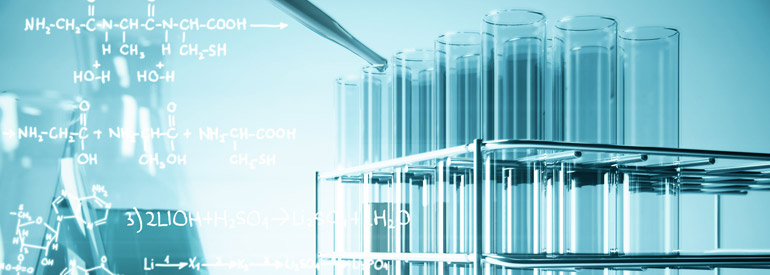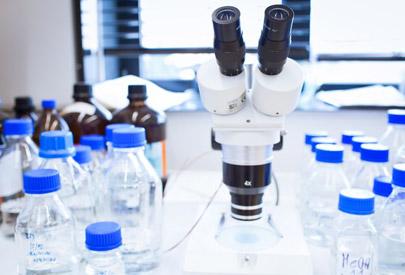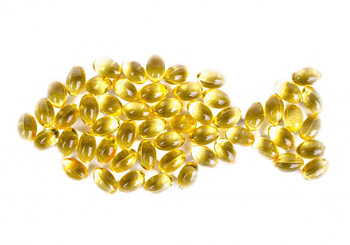
Why the LIPIDOMIC MEMBRANE analysis is not a HOAX


Lipidomic membrane analysis: introduction
It is true that there are many news surfing on the net and that, especially in medicine, you have to make a real “slalom” while reading: we should be able to distinguish between what has a solid knowledge base and validation in the field of health and what is instead an “experimental” result (on a model of cells, animal or man) or, even worse, a news (fake news) that exploits fears or needs of the population without any scientific basis.
When we started our scientific research in lipidomic, more than 20 years ago at the CNR in Bologna, we were also “ignorant” about the importance of the cellular membrane for human health, in prevention and medicine, and we had to study a lot to learn about the bases that FOR DECADES were present in biochemistry, biology and physiology’s books on this vital unit so important. Reassuming with the phrase “without the membrane no cell, no tissue or the whole organism can exist, and without an efficient membrane nothing can work” seems to be a slogan like many others. Instead, it is an important starting point for the prevention and medicine of the 21st century, which takes the TRUTHS written in books (also used as university texts) and countless publications, to progress in the discipline of MEMBRANE LIPIDOMICS as one of the most current and important for molecular health.
The scientific validity of membrane lipidomics
MEMBRANE LIPIDOMICS talk about fats (both formed by the body and taken by the diet) especially by evaluating their organizational capacity to form the site of the cell membrane, to give it the properties necessary to act as a sensor and collection of signals, as well as regulating the passage of oxygen and nutrients and as a metabolic pacemaker.
In our work as researchers with forty years of activity we have participated in national and international work groups for the study of the lipidomic profile, in order to assess physiological and pathological conditions, the type and influence of membrane imbalance in these conditions. We have written more than 100 publications in this regard and also published books in Italian and English on the subject, as well as continuing to study innovative aspects of lipidomics. All this is available to evaluate the “history” of the lipidomic analysis and to distinguish what has deep roots and cannot be labeled as “nonsense or pointless”!
From our studies we essentially understood that there was an enormous amount of KNOWLEDGE on the membrane already available and proven since the last century, to give appropriate certainties through bases of biochemistry, physiology and medicine, for which membrane lipidomic analysis could already be used to read the state of the subject in a molecular sense.
 We have worked seriously and hard to take care of the transfer of knowledge to technology and the market and to spread the analysis, taking care that health professionals (doctor, pharmacist, nutritionist) were the “customers” to whom we could refer. This means that we have not aimed at the “final customer” as a patient, who has no cognitive tools to understand if the analysis can be useful in his case. We thought from the first moment that professionals dealing with human health could be able to give importance to this analysis as a tool to frame the basal molecular condition of their patient. We are still convinced that this approach is right.
We have worked seriously and hard to take care of the transfer of knowledge to technology and the market and to spread the analysis, taking care that health professionals (doctor, pharmacist, nutritionist) were the “customers” to whom we could refer. This means that we have not aimed at the “final customer” as a patient, who has no cognitive tools to understand if the analysis can be useful in his case. We thought from the first moment that professionals dealing with human health could be able to give importance to this analysis as a tool to frame the basal molecular condition of their patient. We are still convinced that this approach is right.
We clashed with the reality that the knowledge of the professionals on LIPIDOMICS is rather small and must increase, but this happens for any topic that could not be deepened during the studies or clinical practice. We work with great commitment and seriousness, addressing the health world with training and information initiatives. We have never “criticized” those unfamiliar with membrane lipidomic analysis, and I think it is equally important not to receive criticism of the kindness of our intentions to disseminate a necessary and established knowledge.
Key points of Our Lipidomic Analysis
With the company LIPINUTRAGEN we aim at two objectives:
• to spread the most solid and reliable analytical method using robotics unique in the world to perform membrane lipidomic analysis by taking the mature red blood cell as a reference cell; having an excellent method of membrane lipidomic analysis allows the MOLECULAR state of the membrane to be assessed as best as possible to understand if there are deficiencies or imbalances in fat elements essential for health, due – for example – to stress or habits and lifestyles and food not appropriate to your body. The references to the importance and nutritional needs of fats are EFSA, WHO, FAO or international agencies that monitor health and nutrition in all countries of the world: we follow these guidelines to understand the importance of analytical results and a molecular profile;
• to give a scientific and optimally calibrated tool to the doctor, pharmacist or nutritionist as the basis for their selection criteria of fat-containing supplements (lipid therapy), which in this way will be customized to the needs of the subject. There is a review of the health claims of supplements taking place at an international level, since it is not enough that there are results of some clinical studies, although published, but there is a need for knowledge to be developed and validation to come from international agencies (see for example the recent case of the use of omega-3 in the cardiovascular sector – https://www.ema.europa.eu/en/documents/referral/omega-3-acid-ethyl-esters-annex-ii_it.pdf). Even more so, random assignment, or even the “do-it-yourself” following the fashions, are even more deleterious because they do not support in any way the choice of lipid therapy, due to the lack of competence of health professionals. To these professionals, membrane lipidomic analysis is aimed at providing the ideal tool for assessing the need and type of supplementation.
Lipidomics and personalisation of the supplement
 An aspect that should not be underestimated is the “richness” of omega-6 and omega-3 supplements on the market, so it should be even more important for the professional to control the type and dosages in a personalized way according to the need of the subject, by having a lipidomic membrane analysis. With two lipidomic analyses, before and after (control analysis) having administered the supplement or changed nutrition, it is possible to further understand precisely how the individual metabolism reacted on the biodistribution and the efficacy of the supplement or dietary regimen. In fact, since the analysis does NOT evaluate the PLASMATIC LEVEL of fats but their levels in the MATURE ERYTHROCYTE, the values found demonstrate the achievement of the ACTIVE SITE, namely, the capacity of the fats administered to reach the MEMBRANE and to perform the fundamental metabolic functions that compete them.
An aspect that should not be underestimated is the “richness” of omega-6 and omega-3 supplements on the market, so it should be even more important for the professional to control the type and dosages in a personalized way according to the need of the subject, by having a lipidomic membrane analysis. With two lipidomic analyses, before and after (control analysis) having administered the supplement or changed nutrition, it is possible to further understand precisely how the individual metabolism reacted on the biodistribution and the efficacy of the supplement or dietary regimen. In fact, since the analysis does NOT evaluate the PLASMATIC LEVEL of fats but their levels in the MATURE ERYTHROCYTE, the values found demonstrate the achievement of the ACTIVE SITE, namely, the capacity of the fats administered to reach the MEMBRANE and to perform the fundamental metabolic functions that compete them.
Conclusion
In conclusion, doctors, nutritionists and pharmacists who do not have knowledge about lipidomic membrane analysis are certainly free to consider it “superfluous” for their patients. What these professionals are not allowed to do is label everything they don’t understand as “nonsense”, without even looking (this time by going themselves to the web!) to the curriculum of the scientists who deal with bringing innovation to prevention and medicine and without worrying about how in the 21st century the setting of clinical evaluation has been set back without the molecular aspect.
Article by:
Dott.ssa Carla Ferreri – Senior Researcher at ISOF-CNR and Lipinutragen co-founder
Photo: 86055637 ©Daniil Peshkov /123rf.com | 11073347 ©lightpoet /123rf.com | ©PublicDomaniPictures /pixabay.com
- On 10 September 2019



